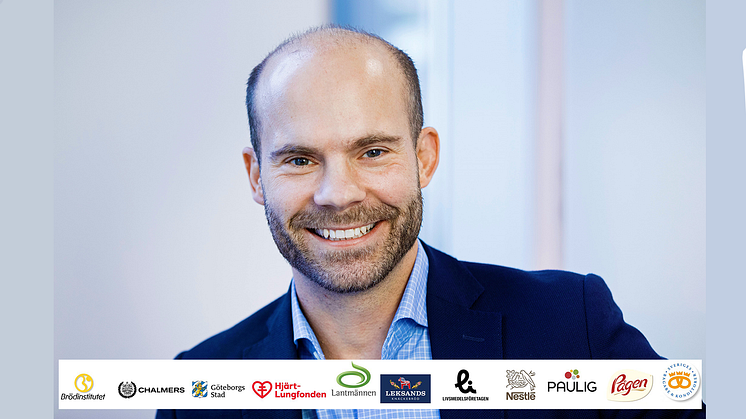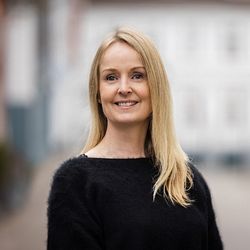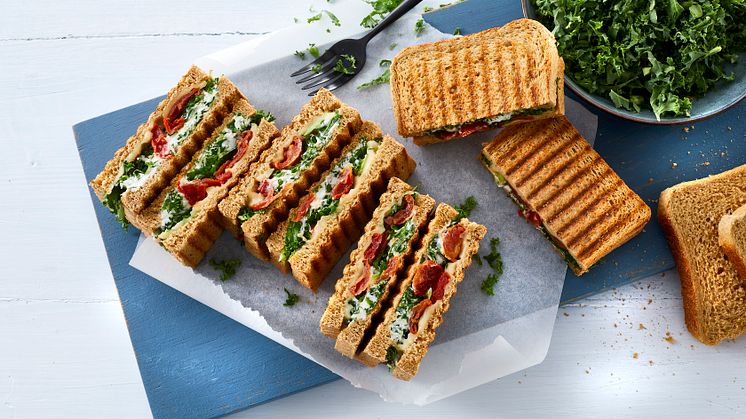
Nyhed -
Nyt fuldkornssamarbejde i Sverige - mød Per Frank fra Nestlé
Per Frank fra Nestlé har i flere år været en aktiv partner i Fuldkornspartnerskabet i Danmark. Nu er han med til at opbygge et samarbejde for fuldkorn i Sverige, hvor både uddannelsesinstitutioner, Livsmedelsföretagenet og producenter er ombord. Også derhjemme i Stockholm hos Per Frank har familien hver dag glæde af fuldkorn til morgen, middag og aften.
1. Short bio Per Frank fra Nestlé
I live in Stockholm with my wife, three daughters and a cat. I am a Nutritionist with a PhD in Exercise Physiology and for the last six years I have been working at Nestlé within nutrition and public affairs. Nestlé is the largest food and beverage producer in the world with a broad range of products covering many different categories. My personal favorite is our breakfast cereals since they all contain whole grain as the number one ingredient, those are the reason why we are proud members of the Danish Whole Grain Partnership.
2. Can you tell us about the efforts in Sweden regarding increasing whole grain consumption? Who is a part of it? and why now?
In Sweden we are well aware of the impressive work done by our neighbors in the Danish Whole Grain Partnership and we are of course inspired to establish something similar based on our conditions. The work is ongoing and led by a diverse project group consisting of Brödinstitutet, Chalmers Tekniska Högskola, Göteborgs stad, Hjärt-Lungfonden, Lantmännen, Leksands Knäckebröd, Livsmedelsföretagen, Nestlé, Paulig, Pågen och Sveriges bagare och konditorier. Considering the public health challenges in Sweden, as in the rest of Europe, the sooner we can establish a whole grain partnership the better.
3. What is in your opinion the strengths of the collaboration in Sweden?
Our key strength is probably the strong backup. We have been reaching out to potential members and we see that there is a big interest in a Swedish partnership. About 40 companies and organizations are interested in joining, these are companies, industry associations, NGOs, universities, etc. We have also involved the Swedish authorities in the process. The inclusion of representatives from all over society enables us to see the problem and how to address it from many different angles.
4. Is there a national recommendation of eating whole grains in Sweden?
Yes. Livsmedelsverket recommends about 70 grams of whole grain per day for women and 90 grams for men. Unfortunately, we eat way too little whole grains in Sweden, a national dietary survey showed that 9 out of 10 Swedes do not meet the recommended intake.
5. What are the main sources of whole grains in Sweden?
About half of the whole grain intake in Sweden comes from whole grain bread, including crispbread. Other sources are breakfast cereals, oatmeal porridge, pasta, corn and rice. Recent years more whole grain products are seen in stores, this is of course a welcomed development, although we need to do more.
6. Which activities are you planning in the future?
At this stage we have not started planning activities. We have had working groups to get the fundamentals in place, like organization, goals, and financial model. The next step will be to send out a letter of intent to potential members, when a sufficient amount has signed the letter we can establish the partnership.
7. What are the most important next steps to increase whole grain intake in Sweden?
Most Swedes know that whole grain is healthy, however, its not the first food they think of when health is discussed. According to a survey performed by Brödinstitutet and United Minds whole grain is in the seventh place when consumers are asked which food group is the healthiest one. It should of course be in first place. One important action will therefore be to raise the awareness of whole grain, and the coolness, whole grain should be seen as the super food it is.
8. What is your favorite whole grain dish?
My evening snack is a big crispbread sandwich with a cup of tea, that’s a clear favorite. My family and I also start everyday breakfast cereals, and then of course we eat a lot of pasta. My kids favorite would have to be the pancakes or the scones I make in weekends. Whenever possible, we always use whole grain of course.



